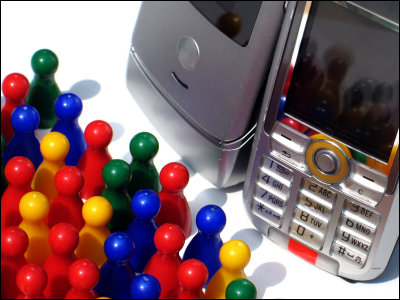Half of people who have come into contact with misinformation in the past believe it to be 'correct information,' and 25% spread it in some way.

On May 13, 2025, the Ministry of Internal Affairs and Communications announced the results of its 'ICT Literacy Survey,' which aims to understand the current state of the spread of false and misinformation. The survey involved interviewing approximately 3,000 people who had seen or heard false or misinformation that had been circulated in the past, and showed that approximately half of them believed the false or misinformation.
(PDF file) ICT Literacy Survey Ministry of Internal Affairs and Communications, Information Distribution Administration Bureau, Information Distribution Promotion Division
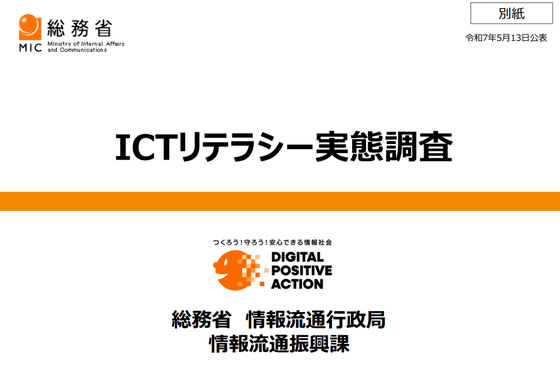
Ministry of Internal Affairs and Communications | Press Release | Announcement of results of survey on ICT literacy and start of broadcasting of TV and web commercials
https://www.soumu.go.jp/menu_news/s-news/01ryutsu05_02000176.html
The Ministry of Internal Affairs and Communications launched the public-private awareness-raising project ' DIGITAL POSITIVE ACTION ' in January 2025 with the aim of improving users' ICT literacy on the internet and SNS. DIGITAL POSITIVE ACTION is working to improve ICT literacy by creating educational materials and holding seminars, and the 'ICT Literacy Survey' was conducted in connection with the project.
The ICT literacy survey was conducted online among 2,820 men and women aged 15 and over nationwide, covering four points: '1: Awareness and spread of false and misinformation,' '2: Reasons and methods for spreading false and misinformation,' '3: Criteria for determining the accuracy of information on social media and the internet,' and '4: Awareness of ICT literacy.' The survey period was from March 31 to April 2, 2025.
1: Recognition and spread of false and misinformation
When people who had seen or heard fake or misinformation in the past were asked how they thought the information was true or false, 47.7% answered 'I think it's correct' or 'I think it's probably correct,' revealing that about half believed the fake or misinformation. 25.6% answered 'I can't say either way,' and about 26.7% were able to distinguish fake or misinformation to some extent, saying 'I think it's false' or 'I think it's probably false.'
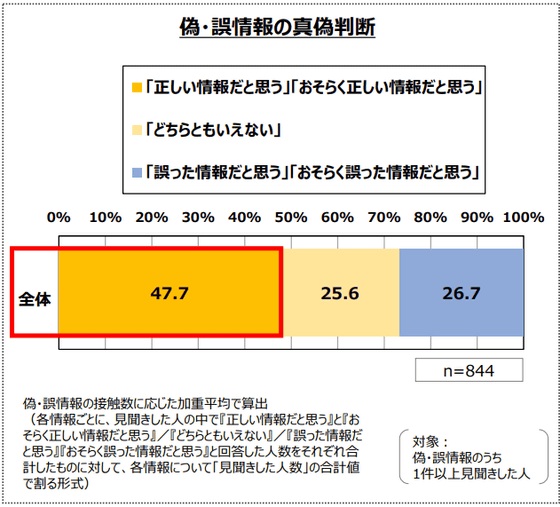
In addition, 25.5% of people who came across false or misinformation shared it with family or friends, or spread it on social media, meaning that about a quarter of people spread false or misinformation in some way. By age, people in their 30s were particularly prone to spreading false or misinformation, with more than half sending out false or misinformation.
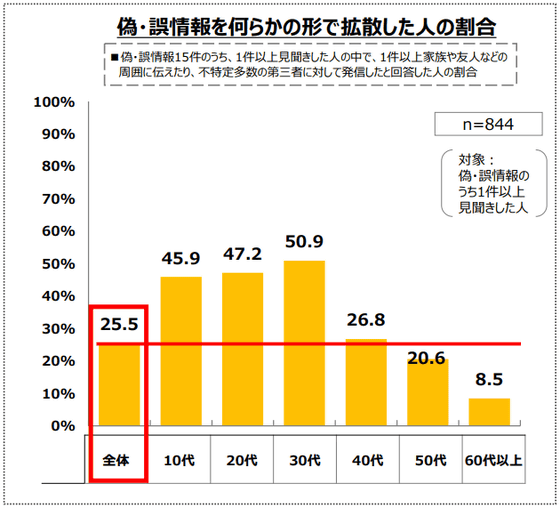
2: Reasons and methods for spreading false and misinformation
When people who spread fake/misinformation by some means were asked to give multiple reasons for spreading it, the most common answer, at 27.1%, was 'Because the information was surprising,' followed by 'I thought it was interesting,' 'I thought it was important,' and 'I thought it would be useful to others,' all of which were over 20%, indicating that they likely believed there was meaning in spreading the information. Additionally, 'Because the information was trending and I wanted to jump on the trend,' was the second most common answer, and 'Because I thought it would be a good conversation piece' was the third most common answer, showing that people place importance on the topicality of the information.
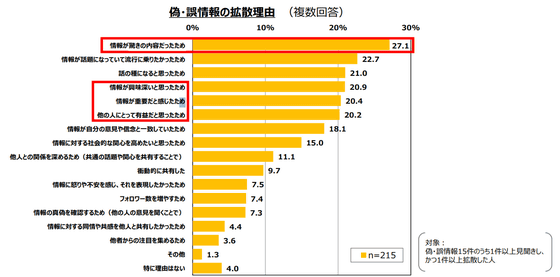
The most common means of spreading false/misinformation was directly communicating with family and friends (58.7%), followed by 44.4% who had spread it to an unspecified number of third parties over the internet, and 44.3% who had spread it to people close to them via email or messaging apps. Medical and health-related information was the most commonly shared category of false/misinformation.
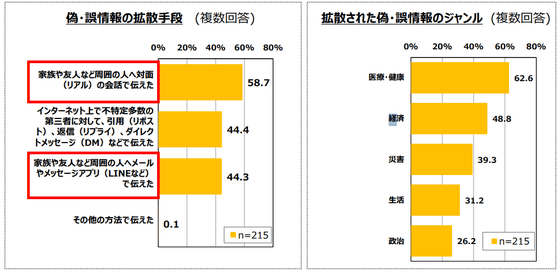
3: Criteria for determining the accuracy of information on social media and the internet
When asked why they trusted fake or misinformation, 41.1% of people answered that 'public institutions were the source/source of information,' showing that teenagers in particular tend to trust the opinions of public institutions and experts. Meanwhile, those in their 60s and older often answered that 'I thought about it logically and objectively,' or 'It matches my own opinions and beliefs.' In addition, when asked why they realized the information was fake or misinformation, the most common answer was 'because I saw a report that it was false,' followed by 'because the comments section of a video sharing service said it was false,' and the MIC noted that video sharing services were being used as a trigger for people to notice the possibility of fake or misinformation.
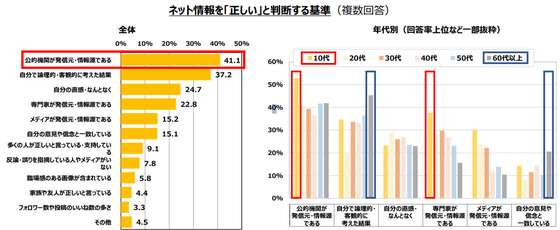
4: Awareness of ICT literacy
35.2% of respondents answered that they 'think their ICT literacy is high,' and by age, 55.7% of teenagers tended to trust their own ICT literacy. With regard to awareness of ICT literacy, the combined percentage of those who 'think ICT literacy is important' or 'think it is somewhat important' was 87.8%, indicating that the majority understand the importance of ICT literacy.

Related Posts:
in Mobile, Web Service, Posted by log1e_dh






